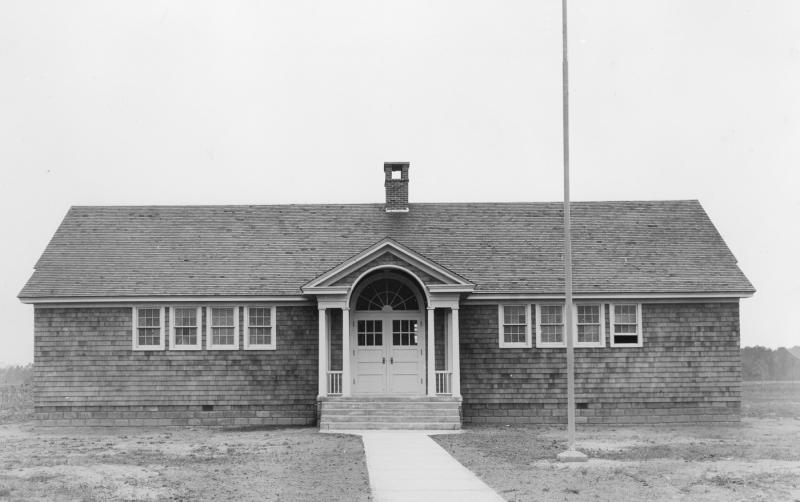Belltown has a unique history
I’ve always been fascinated with how communities got their names. Every town has a story behind it.
So, how did Belltown get its name? Belltown was once a lot more than a pass-through along Route 9 and Beaver Dam Road on the way to the beach resorts. State officials recognized the small village as a “colored” community in Sussex County.
Because of demand for property near the beaches, more and more homes and properties were sold.
Until growth caught up with Belltown, it was a close-knit, almost self-sufficient community.
The Nassau School was purchased by the Delaware Department of Transportation as part of the lands of the Best family and Bests’ Ace Hardware to make way for a new access road from southbound Route 1 to the new roundabout. The building had been used for storage.
A project is underway to establish programming for the school. It is a collaboration among Delaware's Division of Historical and Cultural Affairs, which now owns the school, the Greater Lewes Foundation, Southern Delaware Alliance for Racial Justice and Nassau School Coalition.
Belltown once thrived
The first home in Belltown was built by Jacob Bell, the man for whom the community is named. In 1836, he purchased a lot for $25, and then began to purchase more lots to sell to African Americans.
At the time, there were free African Americans and slaves in the area. Many were fugitives fleeing from the south via the Underground Railroad.
The community grew and eventually included a new school, two churches, a post office, farms and stores. In 1840, there were 16 homes.
In the late 1800s, there were 230 free Blacks and 239 slaves living in and around Belltown.
Bell died in the late 1870s, leaving his property to his heirs. Lots at that time sold for $100. The family donated land in 1873 to build the first John Wesley United Methodist Church, which was located about a mile from the present church.
Members of the church included familiar names from Lewes’ past such as Norwood, Coursey, Burton, Maull, Paynter and Brittingham.
The community evolved around the church and Nassau School, built in 1922, which provided education to students up to the eighth grade. The school, which is near Five Points, served the community until integration in 1965.
It was one of the 33 Black schools built in Sussex County with funding from philanthropist millionaire Pierre S. DuPont.
Many of the schools were left abandoned, but Belltown residents lobbied hard to keep the school in its current location.
A committee was formed with the goal of renovating the school, and it was turned over to the Department of Transportation.
In 1908, a new church was built in Belltown on the north side of Route 9. That church was eventually torn down and rebuilt at its current location in 1946.
The church, now property of Immanuel Shelter, has had a storied past that includes action by Delaware Supreme Court. Sussex County officials had approved a plan to open a homeless shelter. Several nearby residents filed a lawsuit against the plan. The Delaware Supreme Court eventually backed the residents. Revelation Craft Brewing had plans to purchase the property and turn it into restaurant and brewery. That plan was withdrawn.
There is a for sale sign in front of the church now.
Life in Belltown
The highlight of the year was the annual Church Camp Meeting on the grounds of John Wesley Church the last two Sundays of September. The event took place into the 1950s.
In 1935, Harry Burton Sr. built Belltown’s first gas station and general store. Also in the 1930s, Ben Baylis built a tavern where Five Points is today.
During the Prohibition years of the 1920s, some Belltown residents made moonshine and were able to make a lot money from it.
Raymond Williams started his own business by picking up mail and delivering on his bike.
Horses and carriages were rare, so most residents walked. Many had a short walk to their jobs at Knapp’s Apple Orchard. Others walked into Lewes to cook, wash clothes and clean homes.
Others were farmers who grew vegetables and fruits, and raised hogs. Others got on the train in Nassau to travel to Selbyville to pick strawberries.
A dark side
There is a dark side to Belltown’s history in the 1840s. A congregation of devil worshippers believed that after attending seven Sunday services, the devil took possession of a person’s soul and, in turn, they were granted supernatural powers.
The voodoo believers, including Blacks and whites, used herbs, cures and curses.
Fortunately, the sect didn’t last long and disbanded.
The future
What is the future of Belltown? With growth all around the community, there is a lot of pressure to sell the houses that remain. Belltown has become a commercial area because of access to Route 9, and that’s a trend that will continue.
Since the horse has left the barn, it’s paramount that people with ties to Belltown capture the community’s history.
The Nassau School Coalition is a great way to get started.



















































